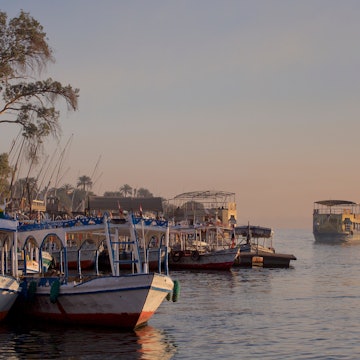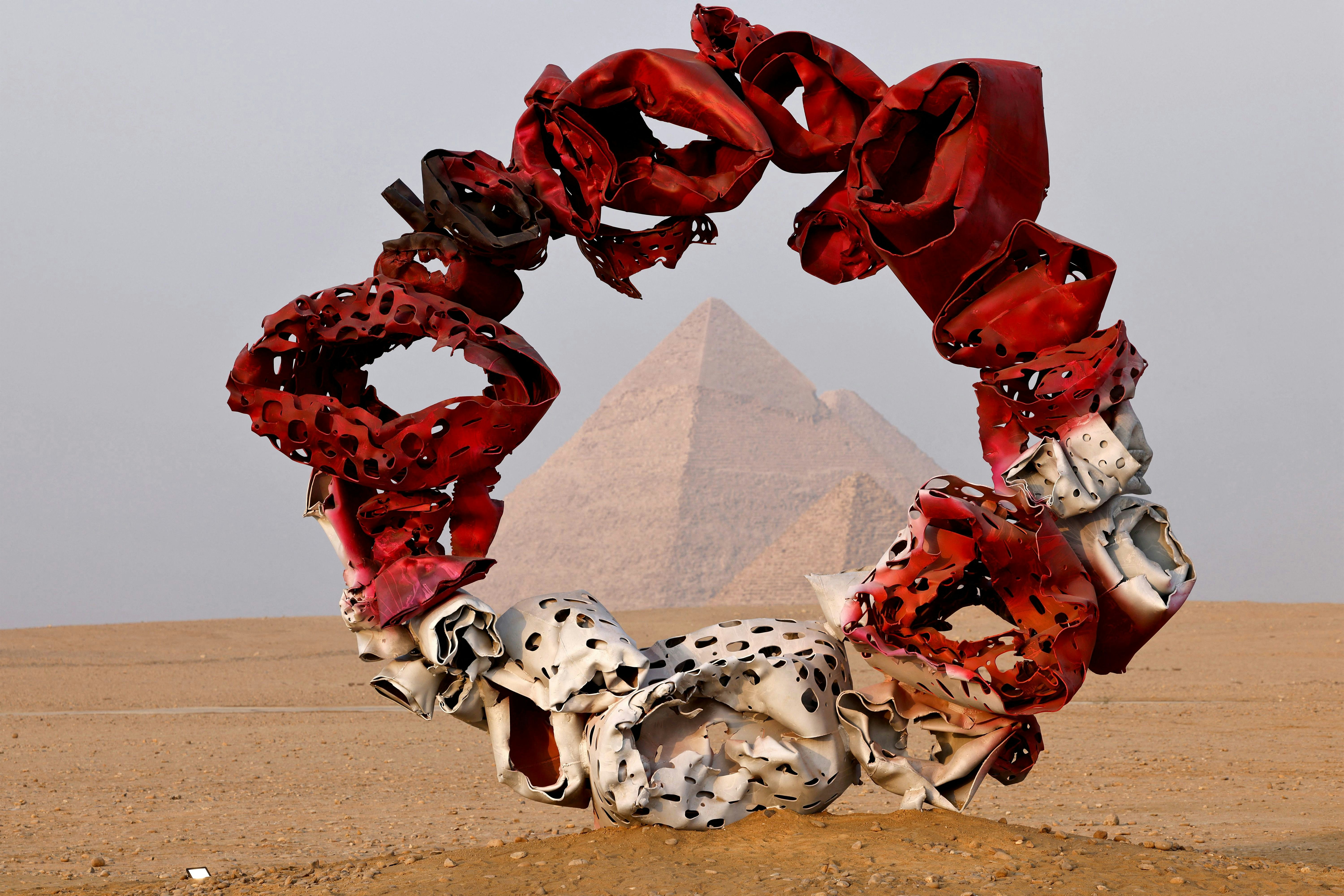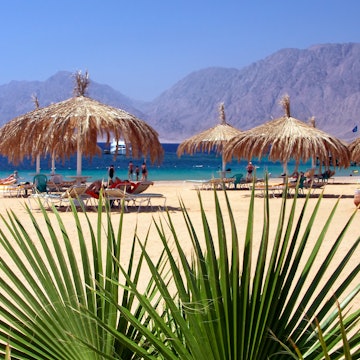
Experience Egypt’s history through its contemporary culture
Sponsored by

Jan 26, 2024 • 6 min read

The Library of Alexandria epitomizes how Egypt is building on its archaeology with an eye to the next generation. Experience Egypt's history and future through the lens of its contemporary culture – through the lens of the Egypt of today © Getty Images
Egypt’s archaeological abundance usually positions it as a portal into the past rather than a gateway to the future. But Egypt’s heartbeat is young, vibrant, and innovative, coursing through the veins of an impassioned generation that’s a force to be reckoned with.
Because while it may be brimming with antiquities, Egypt is far from being antiquated. Its contemporary culture, alternative tourism, and urban development challenge the misperception that ancient history and modern innovation are mutually exclusive. To the contrary – it’s this juxtaposition of antiquity and modernity that invites locals and visitors alike to experience Egypt’s storied past through the lens of its dynamic present.
At this pivotal crossroads between past and future, Egypt is reshaping its narrative for visitors.

Contemporary culture and timeless tradition
For three consecutive years the Pyramids of Giza have served as the majestic backdrop for Art D’Égypte’s flagship contemporary art exhibition, Forever is Now. In 2022, the ancient wonder was transformed into a cinematic runway for the Dior Men's Fall-Winter 2023 fashion show. Through timeless experiences where ancient history meets modern artistic expression, Egypt’s thriving creative industry has become a key player in capturing Egypt’s cultural heritage and conveying its narrative across the global stage.
It’s this same creative powerhouse that orchestrated the regal Pharaohs’ Golden Parade of 2021 where 22 royal mummies were ceremoniously transported from the Egyptian Museum in Cairo to the National Museum of Egyptian Civilization for its grand opening. These 18 kings and four queens now tell one of many carefully curated stories about the complex relationship between Egyptians and their land throughout history.
Just outside NMEC is Le Lac Du Caire, the gorgeous grounds where stories are unfolding about the Egyptians of today. Here, people gather to celebrate the innovations of modern Egyptian civilization – from launches of lavish real estate developments to summits that draw creative minds and aspiring hopefuls from across the Middle East and North Africa (MENA) region.

Over at the highly anticipated Grand Egyptian Museum, innovation houses history. Visitors step into an architectural work of art to be greeted by a towering statue of Ramesses II that is nothing short of grand. Everything inside the GEM tells a timeless story of Egypt’s layered cultural heritage, right down to the culinary experiences in its commercial space.
The world’s largest museum dedicated to a single civilization extends its dedication well beyond its anticipated galleries and artifacts. GEM has played host to immersive art exhibitions like Art Cairo that presented contemporary art from over 100 Egyptian and Arab artists, Traces of Egypt that paid homage to Egypt’s Khayameya and the Egyptian tradition of ornamentation, and most recently the immersive Tutankhamun exhibition, an audiovisual exploration through Ancient Egyptian civilization. In the exterior gardens, history was made in 2023 as entrepreneurial masterminds from around the world flocked to attend MENA’s largest innovation and entrepreneurship summit, held at the intersection of the past and the future.

Alternative Egypt: adventure, sustainability, and ecotourism
Meanwhile, within the winding wadis of Sinai and the Red Sea coast, an alternative travel story has begun to emerge. Egypt’s adventure travel and trail tourism landscapes are off-the-beaten-path experiences both literally and figuratively. Desert plains, iconic peaks, sand seas, and deep gorges draw adventure enthusiasts to explore Egypt’s secluded natural beauty.
Since 2015, community tourism projects like the award-winning Sinai Trail have been inviting boldly curious adventurers into Egypt’s natural landscapes through sustainable travel initiatives that honor the legacy of timeless tribal cultures. What began as a 220km (137-mile) route involving three Bedouin tribes has now expanded into a 550km (342-mile) trail involving eight Bedouin tribes: the Tarabin, Muzeina, Jebeleya, Awlad Said, Gararsha, Sowalha, Hamada, and Alegat.
The Sinai Trail paved the way for the development of the Red Sea Mountain Trail in 2019, managed by members of the Khushmaan clan of the Maaza Bedouin tribe. Egypt’s trails sparked further developments across the region, including the Wadi Rum Trail in Jordan and the Bedouin Trail that connects from Petra to Luxor through the territories of seven Bedouin tribes.

Developed with the mission to create sustainable tourism economies for local Bedouin communities in these remote areas, trail tourism also aims to practically preserve Bedouin heritage that’s become endangered as locals leave the desert for nearby urban communities. Through these trails, visitors are welcomed into the lands and lives of local tribes who now have opportunity and reason to share their history, culture, and knowledge with those who’ve come to experience this other side of Egypt.
Several spots in Sinai are among the 13 ecological sites and protected areas featured in Eco Egypt, an initiative by the Ministry of Environment to promote Egypt’s ecotourism experiences. Eco Egypt highlights the natural phenomena, flora, and fauna at these remarkable destinations that are best experienced in the context of Egypt’s most valuable asset: its people.

Honoring heritage amid future-focused development
Suburban sprawl over the past two decades has led to a mass exodus toward tranquil residential spaces like New Cairo and Sheikh Zayed City. Meanwhile, in the heart of Egypt’s bustling metropolis, downtown Cairo is in the midst of yet another regeneration.
Downtown Cairo hasn’t stopped changing since its urban transformation at the hands of the Khedive in 1870. This transformation turned Cairo into the Paris of the East and drew renowned architects from across the globe to take part in the most iconic urban innovation of the time. Today, downtown Cairo remains an epicenter for creativity, change, and innovation – the soul of the city where artists and entrepreneurs, innovators and enthusiasts flock to bask in its former glory as they roll up their sleeves to create its future.
For the past decade, downtown Cairo has been rediscovering its identity as it stands in the tension between past and present, preservation and progress. When visitors walk through downtown Cairo, they see facades of monumental buildings that hold a wealth of stories within their storeys. Some of these iconic buildings that have witnessed the city’s tireless transformations are now hubs for Egypt’s thriving entrepreneurship ecosystem, creative industry, and arts scene. Behind these historic facades, Egypt’s future is being created.

Marrying past and future
Egypt stands to become an epicenter of human creativity and innovation. At this moment in history, this cradle of ancient civilization has the opportunity to preserve its past while creating the future its legacy deserves. At this crossroads is an impassioned generation of Egyptians who are curators of its past, catalysts of its present, and creators of its future.
Egypt invites visitors to step into the crossroads with it, experiencing the country’s history and future through the lens of its contemporary culture – through the lens of the Egypt of today.
For those who genuinely want to experience Egypt, one trip is only the beginning.
Sponsored by Experience Egypt
As a travel entertainment and inspirational media outlet, we sometimes incorporate brand sponsors into our efforts. This activity is clearly labeled across our platforms.
This story was crafted collaboratively between Experience Egypt and Lonely Planet. Both parties provided research and curated content to produce this story. We disclose when information isn’t ours.
With sponsored content, both Lonely Planet and our brand partners have specific responsibilities:
-
Brand partner
Determines the concept, provides briefing, research material, and may provide feedback.
-
Lonely Planet
We provide expertise, firsthand insights, and verify with third-party sources when needed.















